After you’ve taken down a giant whitetail or mule deer there’s a moment when the adrenaline subsides, your hands stop shaking, and you’re able to start forming complete sentences again. As you take hold of the rack with both hands, the siren song of inches fogs the brain: “I wonder if he’ll make 130. Maybe 135? 140?”
Of course, you want to score your whitetail or mule deer. So how do you go about determining where your monster ranks in the archery record books? Let’s take a look at the requirements that every Pope and Young Club candidate must meet, and how to submit your buck correctly.
Related: World Record Whitetail: The Top 5 Non-Typical Archery Bucks
Minimum Score and Entry Requirements

Your buck might be the biggest you’ve ever seen or shot, but that alone doesn’t get you an invite to the P&Y party. To be considered, there’s a minimum score, in inches, that the antlers must meet.
This score is the total number of inches of the entire rack after a 60-day drying period has elapsed including points, beams, spread, and circumference or thickness at various places. The initial “green score” is taken at the time of the kill or shortly after and will give you an idea of its class (a 140-inch class or 160-inch class buck, etc.) but the official measurement after the 60-day drying period is the only score that P&Y will accept.
For a typical whitetail, meaning the antlers are symmetrical, the minimum score is 125 inches. A non-typical whitetail must have a minimum score of 155 inches for entry.
A typical mule deer has to tape out at 145 inches or greater, while a non-typical muley is eligible at 170 inches.
Other entry requirements include the original scoring form signed by an official P&Y measurer, a completed fair chase affidavit, three pictures of the antlers from the front and sides, and a small processing fee.
Related: World Record Whitetail: The Top 5 Typical Archery Bucks
How to Score Your Trophy
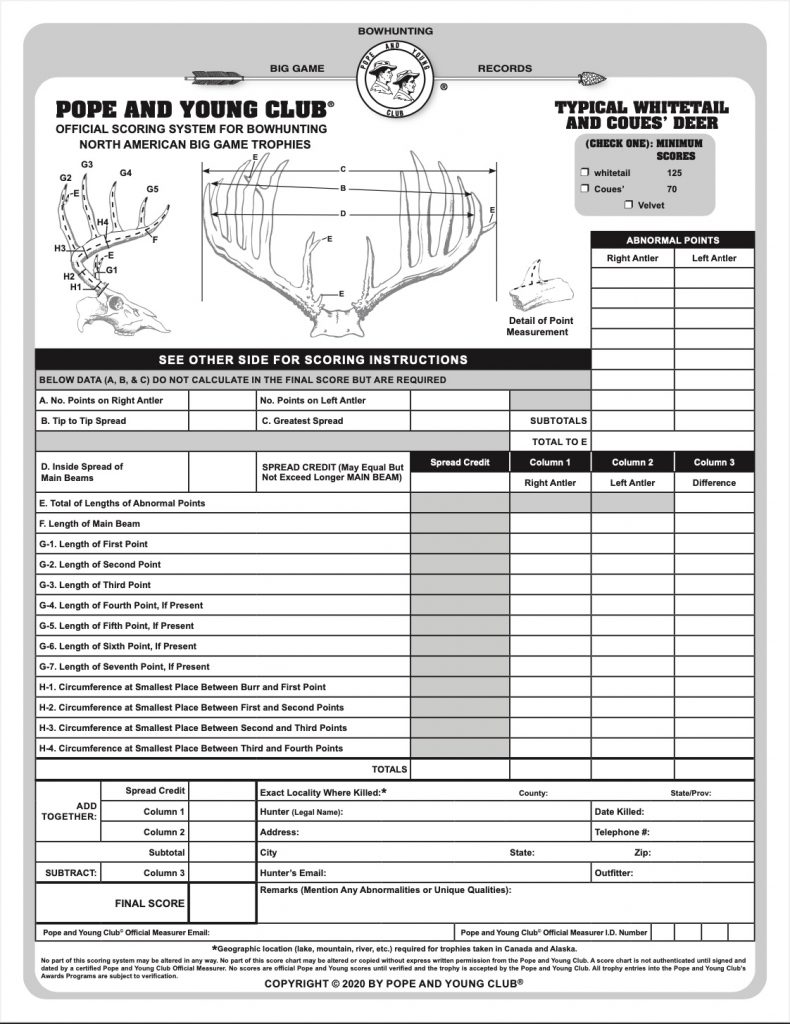
Determining the green score of your whitetail buck or mule deer is a fairly straightforward process if you follow the steps that Pope and Young has outlined. There is a specific scoring form for a typical or non-typical whitetail or a typical or non-typical mule deer.
There are illustrations at the top of the form showing exactly which parts of the antlers must be measured. The letters and numbers correspond with the measurement blocks in the table below in alphabetical and numerical order.
A flexible steel tape or steel cable is required to take measurements recorded to the nearest 1/8 inch. Measurements include: the number of points on each antler, tip-to-tip spread, greatest spread, inside spread of main beam, the total length of abnormal points, length of the main beam, length of normal points (G1, G2, G3, G4), and circumference (H1, H2, H3, H4).
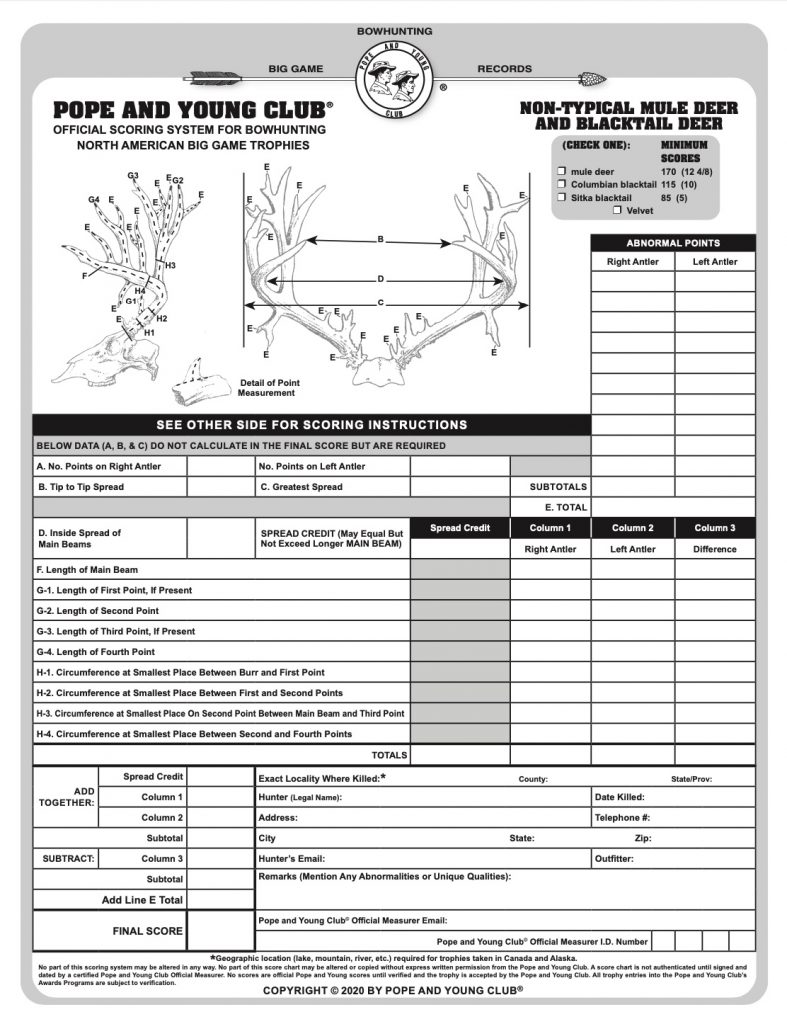
If your buck is still in velvet, the process is the same. Velvet bucks have their own record book, something just recently adopted by Pope and Young.
Remember, if you’re going to submit your buck, the scoring needs to be done by an official P&Y scorer and the rack must have completed a 60-day drying period, but that doesn’t mean 60 days after the animal is killed.
Related: How to Be a Better Archer: Focus on These 5 Bowhunting Fundamentals
Most Common Mistakes to Avoid
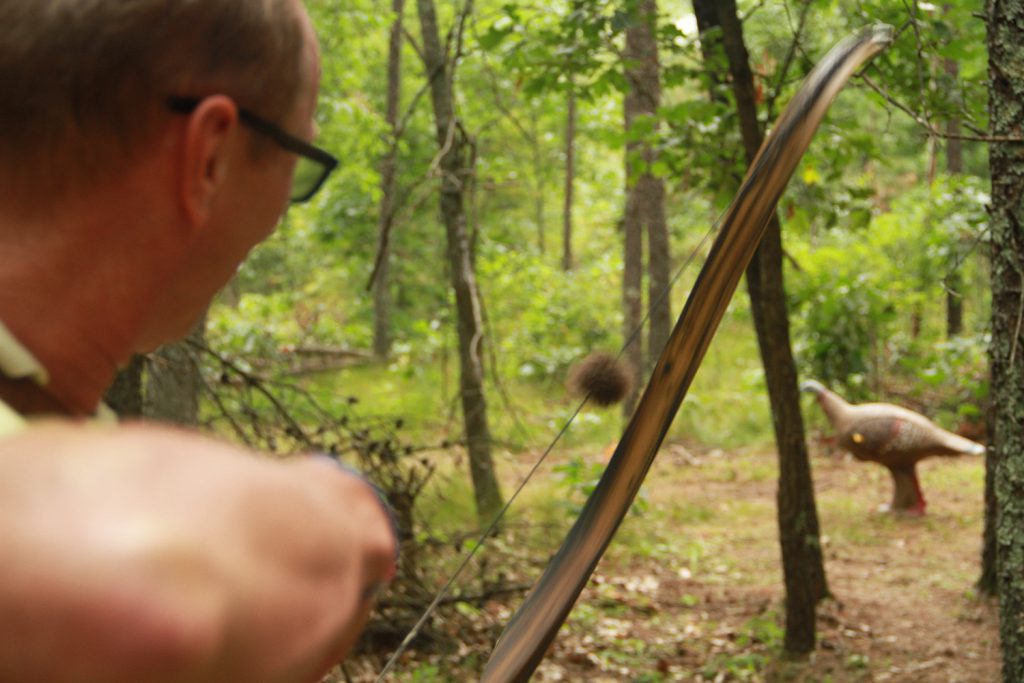
According to Tim Rosewski, director of records at P&Y, the 60-day drying period is where most people miss the mark.
“People think that means 60 days from the date of kill,” said Rosewski. “It actually means 60 days from the date that all the flesh and hide and brain material and eyes, anything flesh-related, is removed — from an antler skull cap or the whole skull if you’re doing European mount. Whether you boil it off, bug it off, masticate it off, the day that that animal comes out of that water or out of those bugs, that’s when the 60-day dry period begins.”
Biologists determined that the 60th day is when antlers begin losing the least amount of mass daily. Waiting until then for the official measurement levels the playing field from one animal to the next and also keeps hunters from “shopping for scores” that are more favorable.
“We’d have guides or hunters having measurers follow them around the woods to measure as soon as it’s dead. It’s been dead [for] two seconds, so you’re going to get a larger score,” Rosewski added.
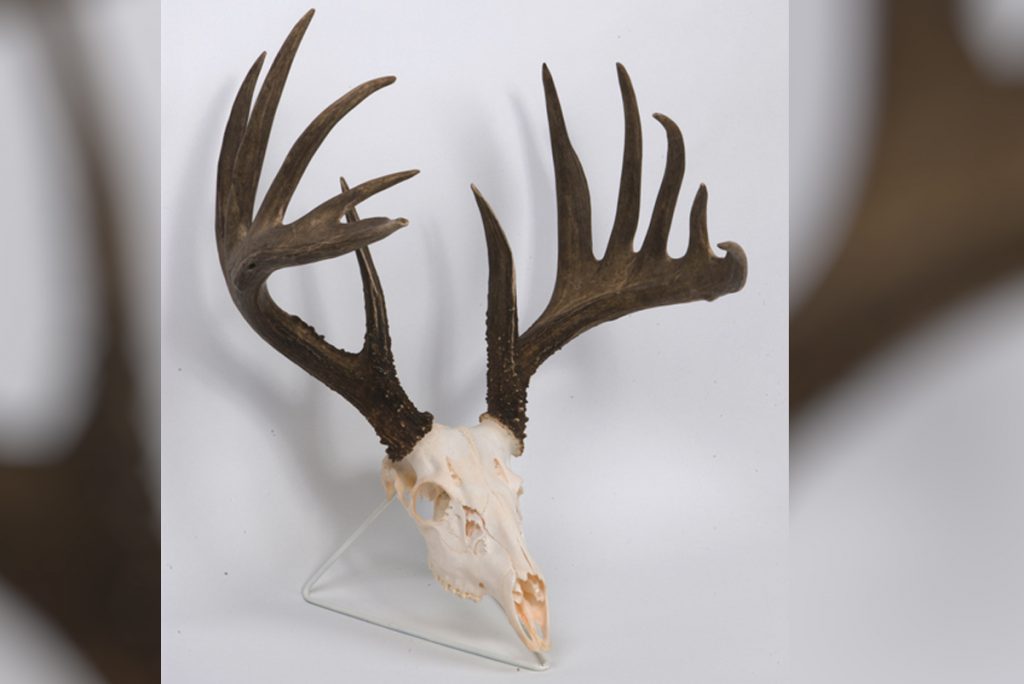
Additionally, hunters need to complete a hunt information form and record weather conditions, first and last shot, and equipment. Aside from serving as data for trend research and outdoor writers, it also uncovers disqualifying criteria.
“Three main things that are pivotal in whether we accept the animal or not are the type of bow, type of bow sight, and type of broadhead,” Rozewski said. “We want to know if it was a traditional, recurve, or longbow because we have separate categories for them. But people will honestly write down, ‘crossbow,’ and we don’t accept crossbow kills. The same goes for electronic bow sights. We don’t allow anything electronic on them.”
One other determining factor is search and recovery. There are times when hunters shoot a buck and cannot locate it until the next day. They never abandoned the search, which is an important distinction. The disqualification comes when a hunter abandons the search, hunts for another day or two, and stumbles across the carcass. That animal does not count.
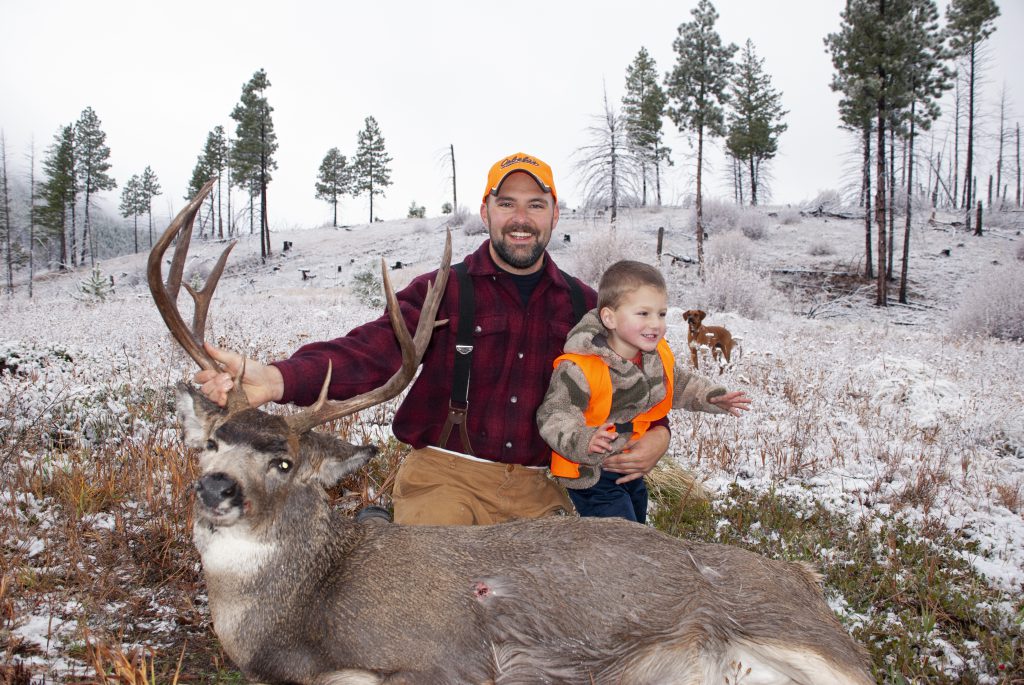
“There are fine lines,” said Rozewski, “But what we don’t want is the guy out there throwing arrows all over the place, wounding animals.”
The vast majority of applicants are pretty straightforward, though. Some even take their search to the extreme.
“We have an example that is incredible,” Rozewski said. “A hunter shot a moose. He watched it fall over dead in a lake. Dead as a doornail. Done. The guide got a weather alert on his radio that there was a death storm coming. They have 10 minutes to pack their crap and fly out or they’ll be there all winter and probably die. He can’t recover his moose and he’s sick to his stomach. Six months later he flies back up there with that guide. His moose is still in the lake, frozen, and he recovers the antlers. He never abandoned the search.”
That moose, and hunter, deservedly made the book.
Read Next: So You Want to Shoot an Archery World Record?

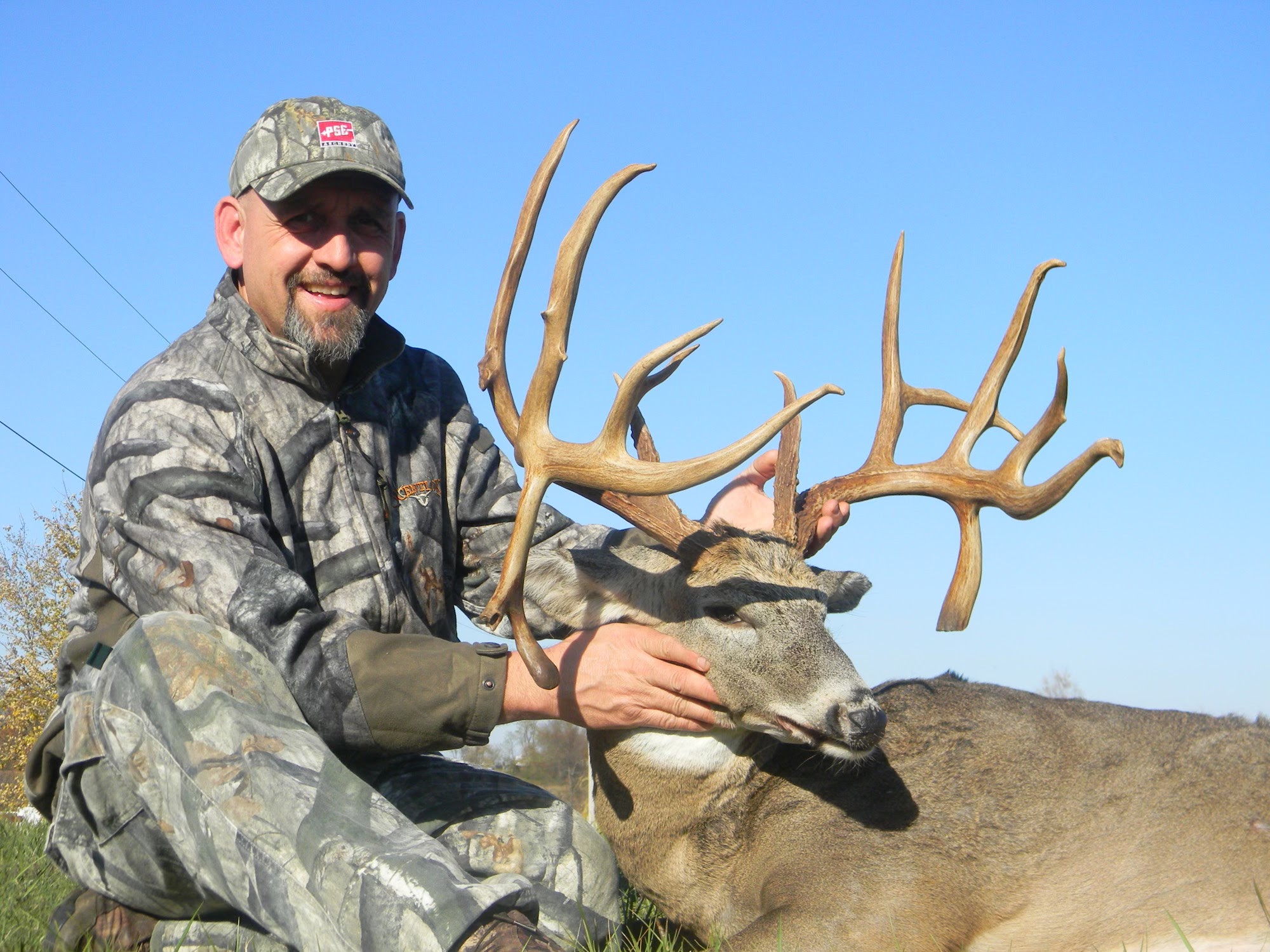

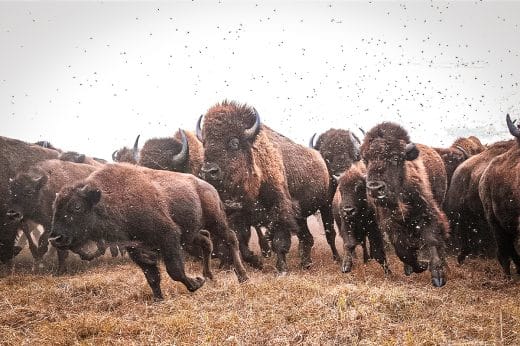
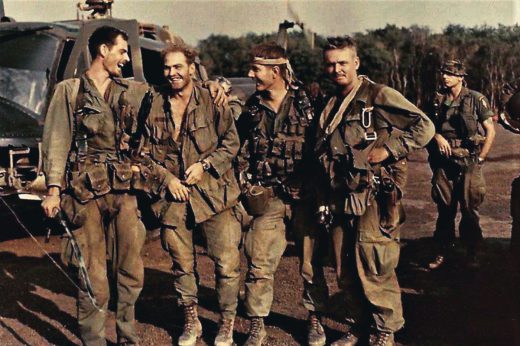
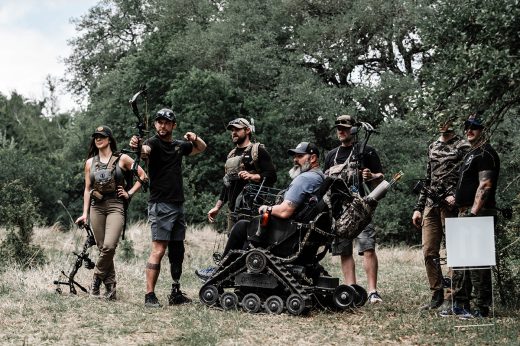


Comments